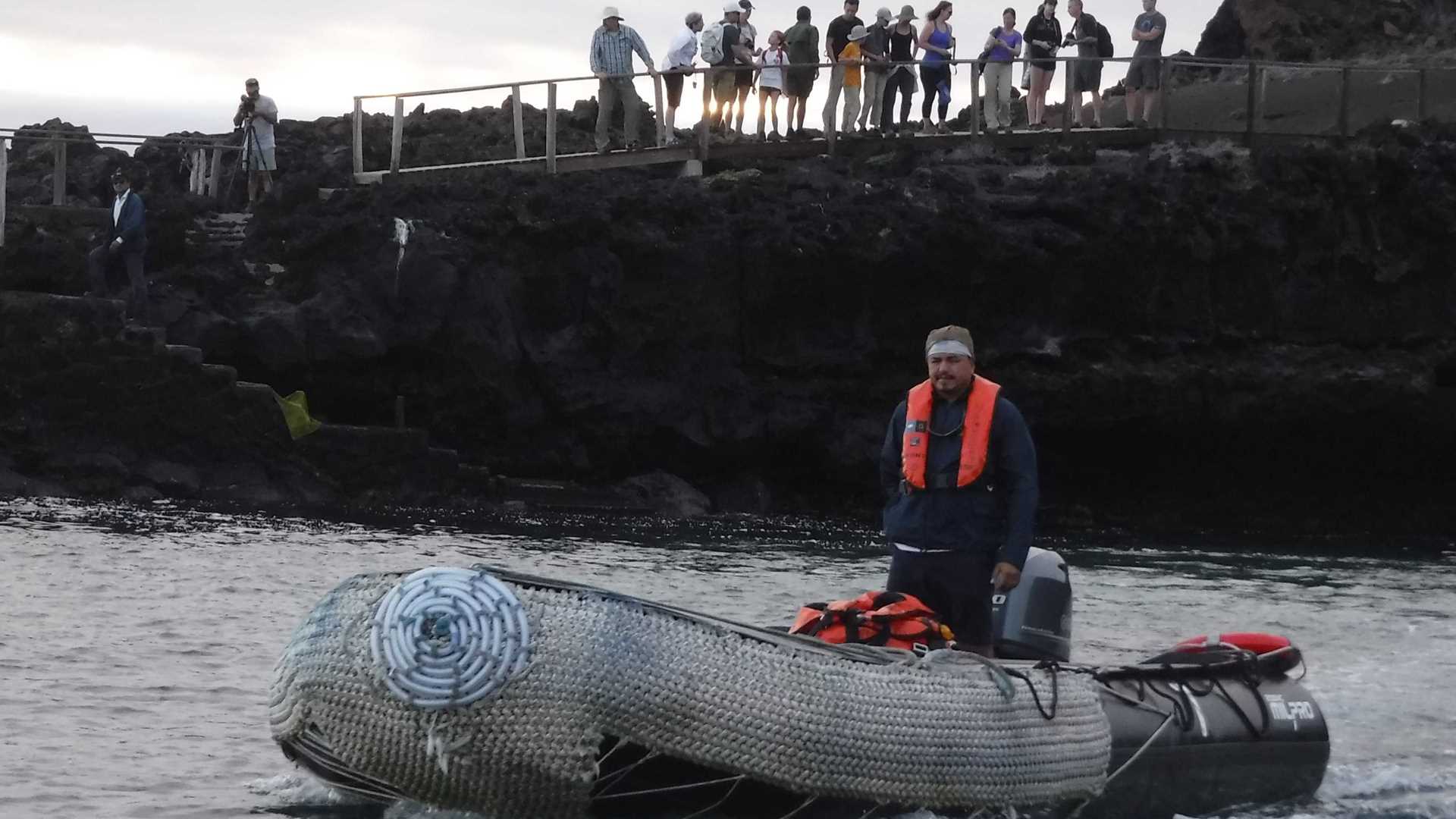We woke up early in the morning to walk to the top of Bartholomew Islet, one of the most famous landscapes of the Galapagos Islands and an amazing geological spot. This islet is a littoral explosion from Santiago volcano, where the hot lava flow meets the cold water of the ocean turning the fluid lava into sediments that come back as compacted sediments forming a mountain of sediments called tuff formation.
Bartholomew is an incredible site for geologists since here you can find spotter cones, scoria and tuff formations and endemic pioneer plants as Tiquilia galapagoa, Chamaesyce amplexicaulis, Exedeconus miersii, Scalesia stewartii and Brachycereus nesioticus.
The red color of this volcanic formation is given by the amount of iron that compose the lava. On the top, approximately 114 m from sea level, we were able to appreciate some islands on the surroundings, as the Chinese Hat, Santiago Island and Daphne Major and Minor on the distance.
While driving the zodiac or “panga” around the shores we were able to spot the famous Galapagos penguin on the rocks. He is the only penguin to nest in burrows within the tropics and the third - smallest in the world. Females lay one or two eggs, which will be incubated for a period of 30 – 40 days. Adults mate for life and when the conditions are favorable, they can breed more than once a year. We saw them also later swimming in the water while snorkeling along the pinnacle rock.
After lunch, we did the second snorkeling activity close to Sombrero Chino Islet and later guests had the chance to explore the shores on zodiac rides.







